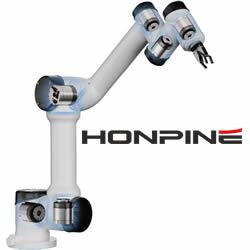Humanoid Robots Market: Shaping the Future of Healthcare, Education, and Automation
The global humanoid robot market is projected to reach approximately USD 6.72 billion by 2034, growing at a CAGR of 15.57% from 2025 to 2034, driven by advancements in AI, automation demand, improved sensors, healthcare applications, educational use, labor shortages, and personalized customer service.
The U.S. humanoid robot market is expected to be valued at USD 0.56 billion in 2024.
The market for humanoid robots is anticipated to expand due to advancements in artificial intelligence (AI), machine learning (ML), and robotics. These robots are designed to imitate human behavior and appearance, which is why they are increasingly being adopted across various industries, such as healthcare, retail, education, and entertainment. In healthcare, humanoid robots are enhancing patient care through assistance in surgeries, rehabilitation, and elderly care. In retail and tourism, these robots assist with customer service, shopping, and even security. In education, humanoid robots are used for interactive teaching, especially for students with special needs. Key factors driving market growth include increased automation, a growing elderly population in need of care, and advancements in AI, sensors, and computer vision that boost robot performance.
Unlock exclusive insights-request your sample copy now!@ https://www.cervicornconsulting.com/sample/2505
CEO Insights
Nvidia CEO Jensen Huang has expressed that humanoid robots could significantly transform the manufacturing sector.
Tesla's CEO, Elon Musk, has updated the timeline for his company's humanoid robots. Musk announced that Tesla aims to begin "low production" for internal use by next year, with full-scale production for external clients expected to start in 2026.
North America Leads the Humanoid Robot Market
In 2024, the North American humanoid robot market was valued at USD 0.75 billion and is expected to grow to approximately USD 3.19 billion by 2034. The region's dominance is due to technological advancements and significant investments in robotics and AI, particularly in the U.S. Various industries, including healthcare, retail, and defense, are increasingly utilizing humanoid robots for customer service, security, and other functions. North America also boasts a thriving tech ecosystem, with numerous top robotics companies and research institutions driving innovation.
Market Highlights
- North America led the market in 2024, capturing 47.50% of the revenue share.
- In 2024, the Asia-Pacific region held a 27.80% share and is expected to grow rapidly during the forecast period.
- By motion type, the wheel drive segment held the largest revenue share of 66% in 2024.
- The hardware segment dominated with a 68% revenue share in 2024.
- Personal assistance and caregiving applications accounted for 31.68% of the market revenue in 2024.
Factors Driving Humanoid Robot Market Growth
Advancements in AI and ML: AI and machine learning are enhancing humanoid robots' ability to understand, interpret, and react to human emotions and actions. With speech recognition, gesture understanding, and environmental awareness, humanoid robots are increasingly useful in healthcare, customer service, and various other sectors.
Rising Demand for Automation: Many industries are embracing automation to increase productivity, reduce labor costs, and perform repetitive tasks. Humanoid robots combine automation with the ability to learn and adapt, making them ideal for industries like logistics, laboratories, and customer care.
Sensor Technology Improvements: The development of advanced sensors has significantly enhanced humanoid robots' abilities. These sensors enable robots to detect motion, process images, recognize faces, monitor temperature, and sense touch. As a result, humanoid robots are safer, more flexible, and capable of performing a wide range of tasks in both industrial and domestic settings.
Expansion of Robotics in Education: Humanoid robots are increasingly used in educational settings, particularly for students with disabilities. Robots like NAO and Pepper engage students in interactive learning, especially in STEM subjects, making education more accessible and enjoyable for all.
Growth in Healthcare Robotics: Humanoid robots are becoming more common in healthcare, where they assist with rehabilitation, surgery, patient monitoring, and mental health therapy. These robots help reduce healthcare worker workloads, improve patient outcomes, and deliver care with precision and consistency.
Demand for Personalized Customer Service: Humanoid robots are increasingly used in retail and hospitality sectors to enhance customer service. These robots can greet customers, provide information, answer questions, and even entertain, offering a more engaging experience compared to traditional kiosks or automated systems.
Labor Shortages Across Industries: With labor shortages in sectors like healthcare, logistics, and retail, humanoid robots are stepping in to perform essential tasks. These robots help reduce labor costs and provide round-the-clock service, addressing the challenges of a shrinking workforce and an aging population in many countries.
Leading Companies
The key players in the humanoid robot market include Engineered Arts Limited, HANSON ROBOTICS LTD, Honda, HYULIM Robot Co., Ltd, KAWADA Robotics Corporation, ROBOTIS, Sanbot Co., SoftBank Robotics, Toshiba Corporation, Willow Garage, and others.
Empower your strategy with expert insights, purchase this premium researchhttps://www.cervicornconsulting.com/buy-now/2505
Ask here for humanoid robot industry research study sales@cervicornconsulting.com
Featured Product

HONPINE - Robot Reducers and Gearboxes
HONPINE is the leading supplier of drive reducers,rv reducer gearboxes,planetary reducers,drive actuators. We provide precision motion control reducers and gearboxes since 2018. We highly value cooperation with our customers and are committed to providing precision transmission solutions.
